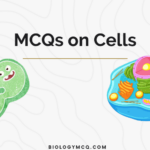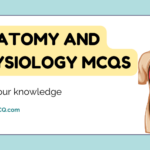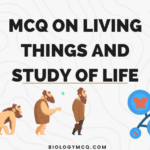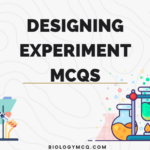Study and Learn with 1000s of Biology MCQs
Plasma Membrane MCQs
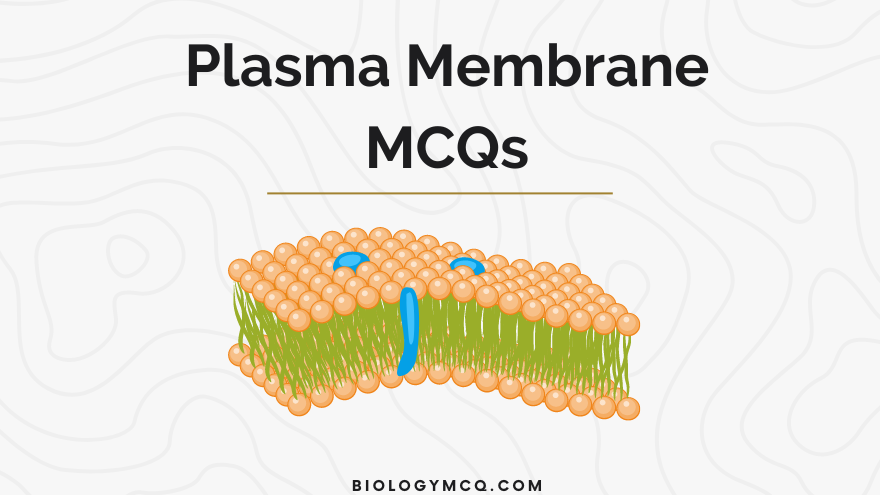
Multiple-choice questions (MCQs) on the plasma membrane explores various aspects of its structure, function, and role in cell physiology. Topics covered include membrane composition, membrane proteins, membrane transport mechanisms (such as diffusion, osmosis, facilitated diffusion, and active transport), and cell signaling.
Answering these MCQs will not only help you understand the molecular mechanisms of membrane function but also deepen your knowledge of cellular biology and physiology.
Ready to test your knowledge ? Lets start with these MCQs
MCQ on Plasma Membrane
A _ made of proteins reinforces the cells and controls cellular movements.
Mitochondria
Golgi apparatus
cytoskeleton
ribosome
cytoskeleton
Organelles called _ that combine oxygen and food to transfer the energy from food to a form that cells can use
Mitochondria
Golgi apparatus
cytoskeleton
ribosome
Mitochondria
Organelles called _, which use energy from sunlight plus water and carbon dioxide to make food
Golgi apparatus
cytoskeleton
Chloroplasts
ribosome
Chloroplasts
The plasma membrane, also known as the cell membrane, is a semi-permeable lipid bilayer that surrounds the cytoplasm of all cells. It serves as a protective barrier, regulating the passage of substances in and out of the cell and maintaining cellular homeostasis.
_ are found only in the cells of plants and algae
Golgi apparatus
cytoskeleton
Chloroplasts
ribosome
Chloroplasts
Plant cells don’t have __?
Centrioles
Vacuole
mitochondria
nucleus
Centrioles
Animal cells don’t have __?
Centrioles
chloroplasts
mitochondria
nucleus
chloroplasts
The membrane that encloses and defines all cells as separate from their environment is called the _ membrane
fluid
plasma
cytoplasmic
None of these
plasma
The fluid inside a cell, called the _, contains all the organelles and is very different from the fluid found outside the cell.
Cytoplasm
Centriole
chloroplast
mitochondria
Cytoplasm
Animal cells are supported by a fluid protein-and-carbohydrate matrix called the _ matrix
intercellular
extracellular
metacellular
None of these
extracellular
scientists call the description of membrane structure the _ model
intercellular
extracellular
fluid-mosaic
cytoskeleton
fluid-mosaic
phile means?
hate
Love
Fear
anger
Love
Phobia means?
hate
Love
Fear
anger
Fear
When carbohydrates attach to the phospholipids, they form _
glycolipids
sulpholipids
nitrolipids
carbolipids
glycolipids
When carbohydrates attach to the proteins, they form _
Nitroproteins
sulphoproteins
Glycoproteins
All of these
Glycoproteins
_ proteins pick up molecules on one side of a membrane and then drop them off on the other side.
Channel
carrier
Both of these
None of these
carrier
The movement of molecules other than water from an area where they’re highly concentrated to an area where they’re less concentrated is?
diffusion
Osmosis
Passive transport
Facilitated diffusion
diffusion
Carrier proteins are also called?
media
pumps
wells
None of these
pumps
In the human body, one place that diffusion occurs is in the _
Stomach
Oesophagus
bronchi
lungs
lungs
You breathe in air, and oxygen gets into the tiniest air sacs of the lungs, called _?
alveoli
broncules
diaphragm
larynx
alveoli
Surrounding the alveoli are the tiniest blood vessels _
aorta
the pulmonary capillaries
Iliac arteries
Vena cava
the pulmonary capillaries
A signal arrives at the plasma membrane of a cell and binds to a _ in the plasma membrane.
receptor
Control centre
effector
None of these
receptor
Signaling molecules that bind to receptors in plasma membrane are called?
Enzymes
harmones
ligands
cofactors
ligands
Signals are received by cells at the plasma membrane and then passed inside the cell by a process called?
signal transmittance
signal transduction
signal transcriptoion
signal translation
signal transduction
The _ in the plasma membrane changes in response to the signal.
Control centre
effector
receptor
None of these
receptor
The _ interacts with a messenger molecule inside the cell that receives the signal and changes in response
receptor
Control centre
effector
None of these
receptor
The Law of _ says that if the amount of a substance in the body is to remain constant, any input must be offset by an equal output
Energy balance
Density balance
Pressure balance
Mass Balance
Mass Balance
